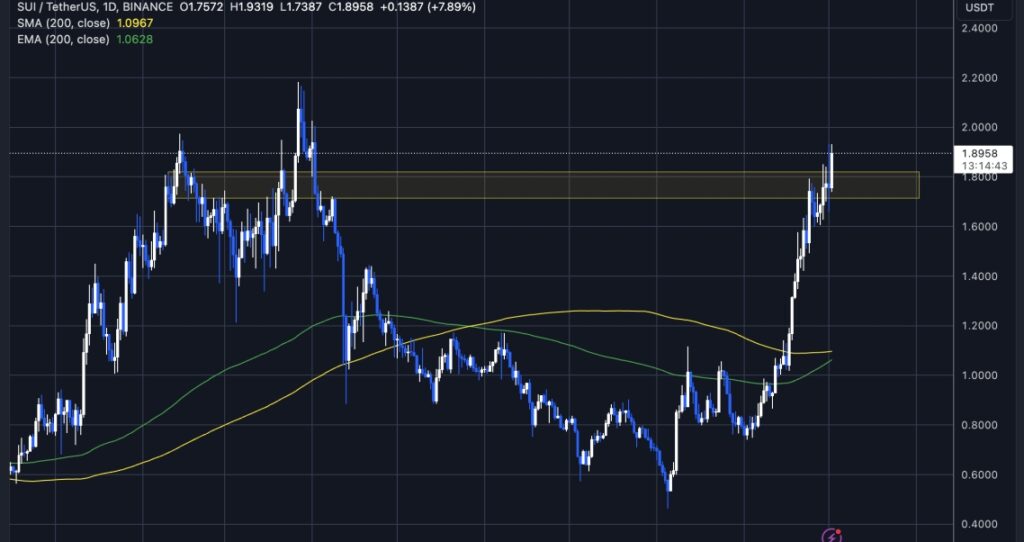With minor daily fluctuations reflecting a continuing phase of stabilisation, Bitcoin (BTC) has exhibited a steady price trend as of mid-April 2025. The current Bitcoin price is hovering around $84,391. BTC remains significantly below its peak of $95,000, a price level it reached in early 2025, despite showing some positive progress lately. Many observers have concluded from this price behaviour that Bitcoin is currently hovering around its “fair value,” a concept that combines intrinsic value, based on factors such as supply and demand, with its market valuation.
Bitcoin Market Maturity
The latest price swings of Bitcoin mirror a more significant trend of balance. Unlike past times when Bitcoin experienced extreme swings or abrupt drops, it is now in a relatively quiet phase. Bitcoin has been erratic in the past, moving between extremes of bull runs and abrupt declines; now, in 2025, it seems to be settling into a range that reflects its fair market value. For both short-term and long-term market players, this consistent price range provides a more predictable view than many investors are used to, even if it does not provide the thrilling highs.
Elements such as its liquidity, demand dynamics, sentiment, technological advancements, and the broader economy help define the fair value of Bitcoin. Given the limited supply of Bitcoin—21 million coins—any notable increase in demand, especially from institutional investors or large financial institutions, may cause significant price hikes, as earlier bull markets have shown. However, as Bitcoin develops, its price swings are starting to align more closely with general economic cycles; therefore, it may take longer for it to reach either extreme highs or lows.
Bitcoin’s Bullish Momentum
Despite its consolidation around fair value, a multitude of significant factors maintain investor optimism, indicating a promising future for Bitcoin. The growing institutional interest in Bitcoin is one of the most critical driving forces behind factors of its value. Major institutions and hedge funds are increasingly becoming long-term investors in the ever-increasing number of spot Bitcoin exchange-traded funds (ETFS). These investors are especially important, as they provide regular investors with simpler access to Bitcoin exposure without requiring them to purchase the coin directly.
In addition to institutional investment, experts predict that the approaching halving of Bitcoin in 2024 will significantly impact its price. Every four years, the halving process reduces the reward miners receive for processing Bitcoin transactions by half, thereby slowing the rate at which new Bitcoin enters circulation. Many analysts believe this occurrence will trigger a new wave of buying activity as supply decreases, thereby driving the price of Bitcoin significantly higher over the long term.
Furthermore, the possibility that Bitcoin will become a “store of value” like gold is also a factor. For many investors, particularly those concerned about traditional fiat currencies, persistent concerns over inflation and economic uncertainty make Bitcoin, indeed, a hedge. Indeed, because Bidecentralised is an alternative to conventional assets, it is perceived as “digital gold.” This shift in perception continues to encourage new investors to enter the market, thereby boosting demand and bolstering the price stability of Bitcoin.
Future Bitcoin Volatility
While Bitcoin’s long-term outlook remains positive, it is essential to acknowledge the potential risks and challenges that could impact its future price trajectory. Bitcoin has been known for its volatility, and many analysts caution that the cryptocurrency could experience significant corrections even during bullish periods. Some experts, like those at VanEck, anticipate a possible 30% pullback after Bitcoin reaches new highs. This correction could lead to further consolidation before the next leg up in its price. This type of fluctuation is common in markets with relatively low liquidity and high speculative interest, such as Bitcoin.
Additionally, macroeconomic factors such as changes in interest rate policies by central banks, particularly the U.S. Federal Reserve, could impact Bitcoin’s price. If the Federal Reserve continues to raise interest rates in an attempt to combat inflation, it could drive investors away from riskier assets, such as Bitcoin, and toward more stable investments, like government bonds. On the other hand, if inflation persists at high levels and interest rates remain elevated for an extended period, Bitcoin could benefit from its appeal as a store of value.
Furthermore, the future of cryptocurrencies is often plagued by regulatory uncertainty. At the same time, many countries are developing clearer regulatory frameworks, while others remain uncertain about the classification and regulation of digital assets. Any adverse regulatory actions could have an immediate negative impact on Bitcoin’s price, although its decentralised nature makes it somewhat resilient.
Final thoughts
Bitcoin’s price outlook remains neutral in the short term, with the cryptocurrency continuing to trade around its fair value. Nevertheless, the combination of institutional adoption, the upcoming halving event, and Bitcoin’s increasing recognition as a store of value suggests that the digital asset could see significant growth over the coming years. That said, investors should remain cautious of potential price fluctuations and external economic factors that could influence Bitcoin’s price.
In summary, Bitcoin’s continued consolidation around fair value reflects a maturing market where the forces of supply and demand are beginning to find balance. While its volatility remains a concern, the long-term outlook for Bitcoin remains positive, as its status as a digital asset with unique value propositions continues to attract both institutional and retail investors alike.




